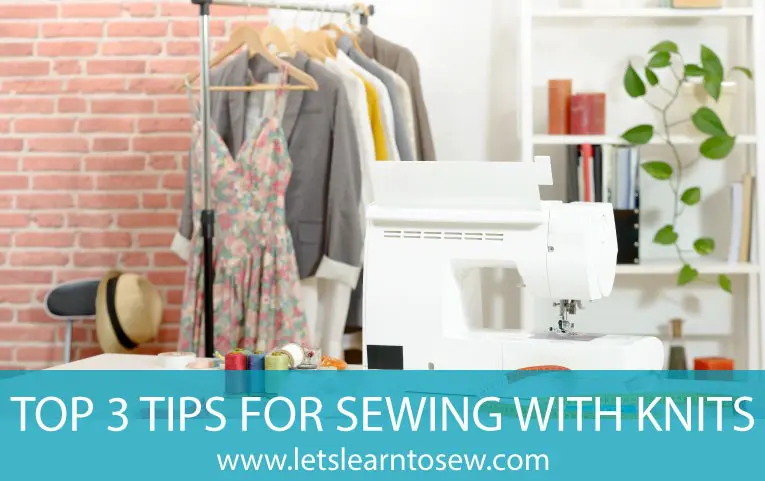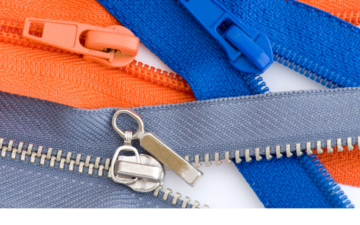Who doesn't like wearing knit fabric? Knit clothing is easy to sew and fit, plus knit fabric needs less pressing and care than most other fabrics. Want to learn how to sew knit fabric or improve your results when sewing with knit fabric? Here are my top 3 tips for sewing with knits!
1. Use the Correct Stitch
Knit garments are made to stretch and fit over the body. This means the seams must also stretch to fit. A serger is useful for sewing knits but it isn't a must-have to create a stitch that has some give to accommodate knit fabric.
Most sewing machines come preprogrammed with one or more stitches made especially for knits. These are called stretch stitches and usually, look like a tight zigzag stitch. I think the display looks like a lightning bolt. If you still have your machine manual (I think you should hang on to it for as long as you own the machine) it should tell you which stitch is recommended. If your machine does not have a stretch stitch you can set it to a long narrow zigzag stitch.
2. Use the Correct Pins and Needles
Ballpoint pins have a rounded tip that won't pierce knit fibers and cause holes. Colored plastic heads make them easy to see and easy to grasp. Pattern weights are another good option when working with knit fabric.
Stretch needles and ballpoint needles are designed with a medium ballpoint tip that prevents snags on knit fabrics. The ballpoint needle works well on sweater-type knits. The eye and scarf of the stretch needle are designed to prevent skipped stitches on highly elastic knitwear.
- For lightweight knit fabric use ballpoint size 70/10 or stretch size 75/11
- Medium-weight knit fabric use a ballpoint or stretch size 80/12
- Heavyweight knit fabric use a ballpoint or stretch 80/12 or 90/14.
Stretch twin needles are designed with the same ballpoint tips as the single-stretch needles to prevent snags. Twin needles share one shank that inserts into your sewing machine. Most machines (excluding straight stitch only) can utilize two needles.
A twin needle is great for topstitching hems as it stitches two rows of straight stitches on top of the hem, and the bobbin thread forms a zigzag stitch on the reverse side to build stretch into the hem. This will help keep stitches from popping when the fabric is stretched.
3. Stabilize Shoulder Seams
Chances are if you turn a favorite ready-made t-shirt or knit blouse inside out and you are likely to see clear elastic, twill tape or woven fabric cut on the bias stitched into the shoulder seam. It's there to stabilize the seam. Stabilizing the shoulder seams prevents them from stretching out of shape. The completed seam can still stretch, yet it remains stable with good retention.
I use the clear elastic in shoulder seams even when sewing on my serger.
Ready to Start Sewing?
Knit fabric really can be a joy to work with and will expand your ability to create wearable garments. As with most skills, practice is key. No matter what sewing machine you have, there are tips and hacks available to help your journey proceed with success. You can find more tips for sewing with knit fabrics here.













Leave a Reply